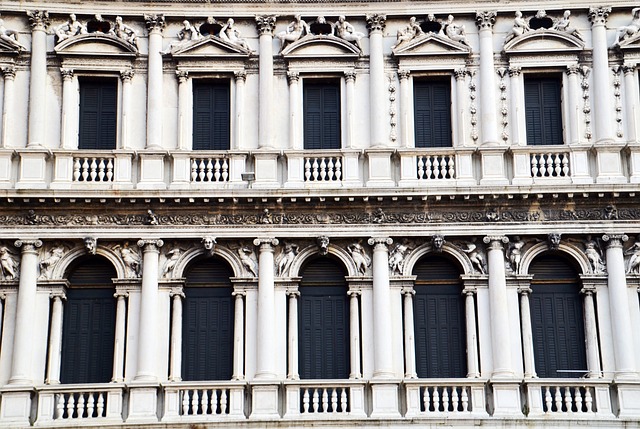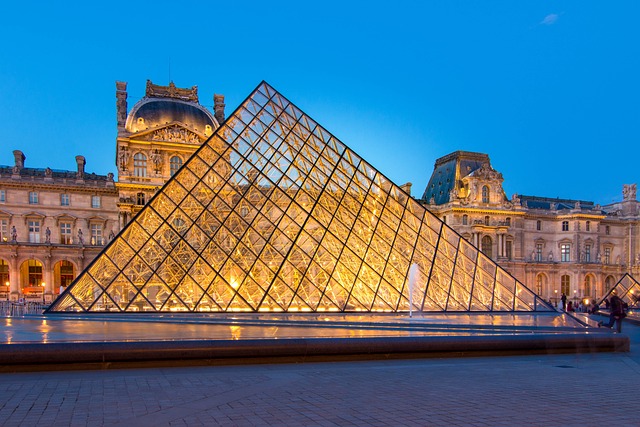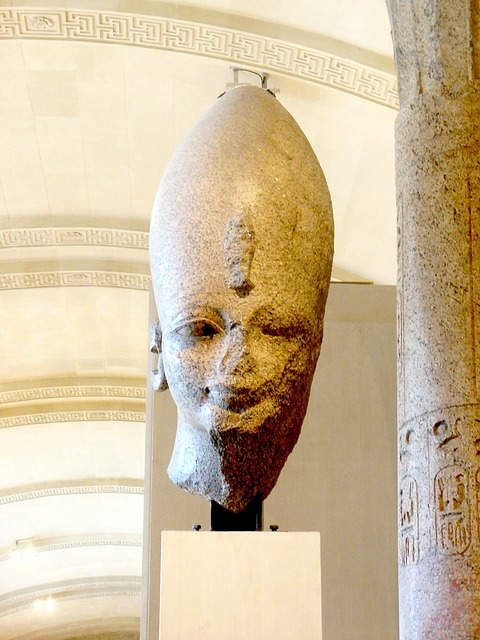Behind the Glass: The Iconic Architecture of the Louvre
The Louvre Museum in Paris, France, is not only one of the world’s largest and most visited art museums, but it also serves as a masterpiece of architecture in its own right. From its historical roots to its modern-day renovations, the Louvre’s architectural journey mirrors the evolution of art, culture, and society. Central to this evolution is the iconic glass pyramid, which has transformed public perception and experience of this historical site.
A Glimpse into History
The Louvre began its life as a fortress in the late 12th century under King Philip II, intended to defend Paris from the English during the Hundred Years’ War. The transformation of the Louvre from a fortress to a royal residence began in the 16th century under King Francis I, who initiated its embellishment and expansion. As the years progressed, successive monarchs added their architectural touches, culminating in the grand exhibitions of Renaissance and Baroque styles.
During the French Revolution, the Louvre was transformed into a museum in 1793, becoming a place where the art and culture of France could be shared with the public. For over two centuries, the museum has hosted treasures from history, including works by masters such as Leonardo da Vinci, Michelangelo, and Delacroix. Yet, amidst the iconic works of art, the structure itself has undergone remarkable changes, reflecting different eras and styles.
The Glass Pyramid: A Modern Marvel
One of the most significant changes to the Louvre’s landscape occurred in 1989 with the introduction of the glass pyramid, designed by the Chinese-American architect I.M. Pei. This daring architectural piece received mixed reactions upon its unveiling; however, it has since become synonymous with the Louvre.
The pyramid serves multiple purposes. Beyond its striking aesthetic appeal, it acts as the museum’s main entrance, providing a clear portal for millions of visitors each year. This new entrance dramatically improved visitor flow and accessibility, accommodating the burgeoning crowds that the museum attracts.
The construction of the glass pyramid required approximately 673 glass panes that were precision-cut and assembled to create a perfect geometric shape. The pyramid stands 21 meters tall and has a base measuring 35 meters on each side. Its design echoes the simplicity and harmony of classical architecture while embracing modern techniques and materials.
Symbolism and Reception
The glass pyramid symbolizes the union of historical and contemporary architecture. Some critics argued that the modern structure jarringly contrasted with the surrounding classical buildings, such as the Renaissance-era Cour Carrée and the Baroque Palais du Louvre. However, others viewed the pyramid as a necessary evolution for the museum, a bold statement that propels the institution into modernity.
Visitors often find the pyramid particularly enchanting at night. Illuminated from within, the structure radiates a warm glow, attracting admirers who capture the striking juxtaposition of contemporary design against the historic backdrop of the Louvre. The pyramid has indeed become an integral part of the Parisian landscape, representing a bridge between the past and the present.
Architectural Inspirations
I.M. Pei drew on the history of the Louvre and the surrounding Parisian landscape when designing the pyramid. The choice of glass was purposeful, aiming to create transparency and openness, values that align with the museum’s mission of sharing art with the world. The play of light through the glass serves as a metaphor for enlightenment, knowledge, and discovery—key tenets in the museum’s rich history.
Pei also emphasized the geometric form in the design, inspired by the mathematical precision of classical architecture. The pyramid’s angular lines mirror the myriad shapes and forms found within the museum’s extensive collections, from ancient artifacts to modern paintings. The harmonious relationship between the glass structure and the historic buildings of the Louvre symbolizes a dialogue between time periods, transcending the boundaries imposed by traditional architectural classification.
Reflections of the Interior
Upon entering through the glass pyramid, visitors find themselves in the vast subterranean space known as the Hall Napoléon. This area was redesigned alongside the pyramid to create a seamless integration between exterior and interior. The grand halls, adorned with intricate details and elegant sculptures, echo the richness of the museum’s collections.
The introduction of the pyramid also allowed for the creation of amenities for guests, including ticket counters, cafes, and gift shops—all cleverly integrated into what was once a purely transitional space. This attention to visitor experience reflects a broader trend in museum design, where functionality meets artistry, making the cultural journey as enjoyable as the art itself.
Restoration and Preservation Efforts
The Louvre’s architectural story is one of continual growth and adaptation. Notably, the museum undertook extensive restoration projects to preserve its historic elements while upgrading its facilities to meet contemporary standards. These efforts include conserving the ornate exteriors, maintaining the delicate balance between preserving the past and celebrating modern advancements in architecture.
Each year, the museum welcomes a staggering number of visitors, and managing the infrastructure to accommodate this influx is a continual challenge. The balance between modernization and preservation remains crucial for the Louvre, ensuring that the historical integrity of the museum is maintained while offering state-of-the-art experiences.
Architectural Tours and Experiences
To truly appreciate the architectural heritage of the Louvre, various guided tours and experiences are offered, providing insight into its multifaceted history. Visitors can explore both the historical wings and the contemporary glass pyramid, often guided by experts who illuminate the intricate details of the designs and their meanings.
Walking through the galleries, one can observe firsthand how architectural design influences the experience of the artworks displayed. The spatial organization, light, and materials work uniquely in each room, allowing visitors to engage with the art in different ways. The layout intentionally directs foot traffic, guiding spectators through historical narratives while ensuring that the architectural features themselves tell a story of their own.
The Louvre as a Cultural Beacon
The Louvre Museum extends far beyond its role as an art institution; it symbolizes the intersection of history, architecture, and culture. The glass pyramid stands as a testament to innovation, inviting a diverse audience to explore its treasures while reminding them of the values that shaped this iconic site throughout the centuries.
As an architectural and cultural beacon, the Louvre continues to inspire contemporary architects, artists, and designers worldwide. Its ability to adapt, evolve, and embrace modernity while honoring its historical roots is a lesson in resilience and creativity that resonates across various disciplines.
Conclusion
In summary, the Louvre’s architectural journey is a captivating narrative that reflects the heart of Parisian culture and art. From its inception as a fortress to its modern visage dominated by the glass pyramid, the museum serves as a testament to human creativity and imagination. The juxtaposition of classical and contemporary design within its walls invites visitors to see beyond the art, expanding their understanding of architecture’s critical role in representing and shaping cultural identity. The Louvre encapsulates not merely a collection of art but a continuing dialogue between history and the present, encouraging us to look beyond the glass and embrace the story behind it.


